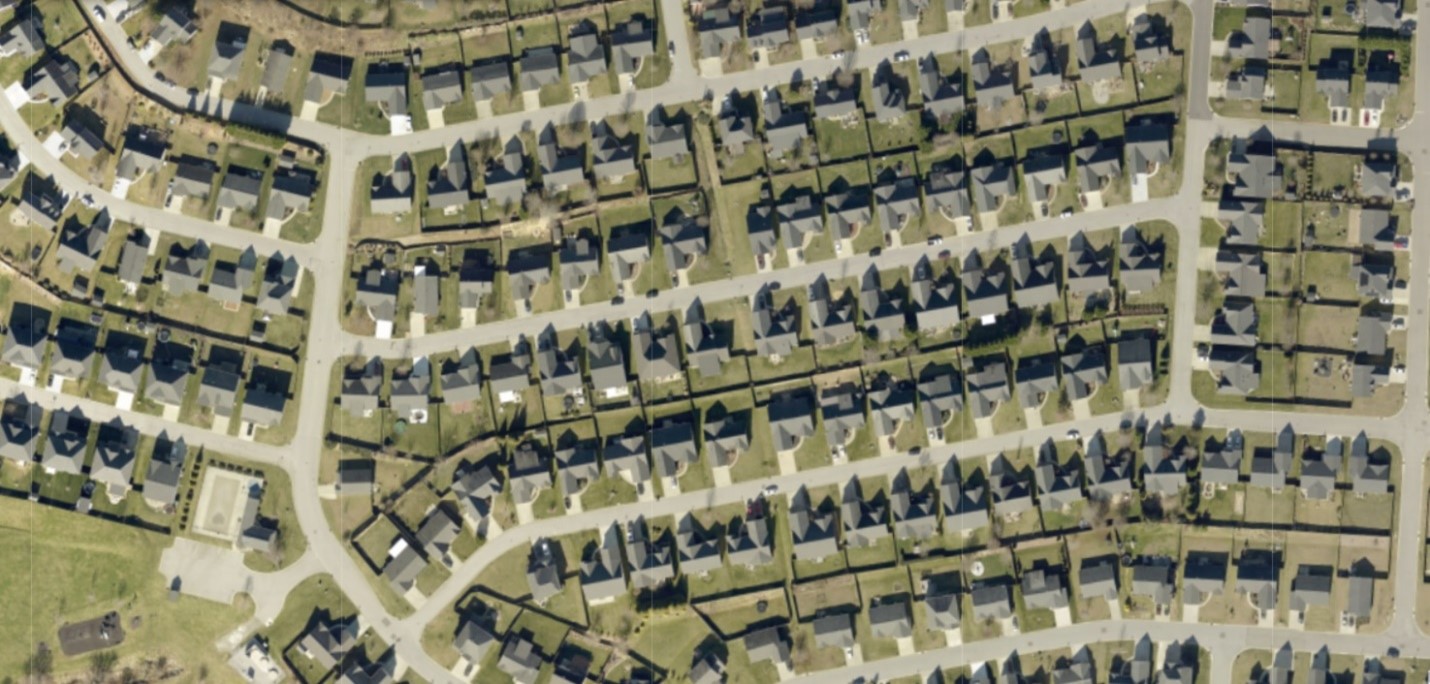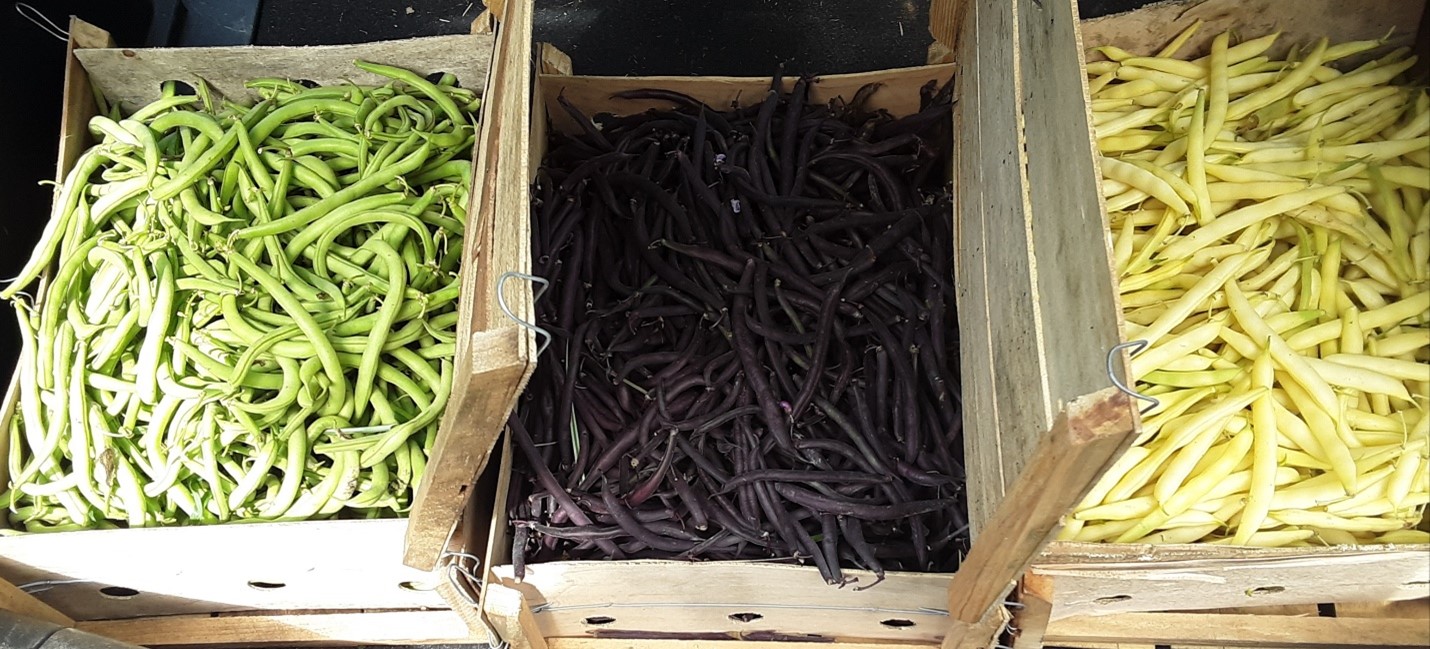Tools for Farmland Preservation in Transylvania County
By Torry Nergart, Conservation Easement Manager
Take a look from the hawk’s eye view of new development in western North Carolina. Row after row of hastily built houses on sites that used to be productive farmland. This certainly begs the question, what are all those people going to eat?!?

2022 aerial photo of land along the French Broad River, Henderson County. (Henderson County GIS)
Our local producers can’t keep up with this influx of demand. Foods are unsustainably imported from around the world, processed to a point where shelf life and transport are the only virtues of the product. Traits such as flavor and nutrient density are cast aside, even “fresh” fruits are artificially ripened to be shipped across the continent.
Our current foodways are having depressing effects on our collective physical health, as well as on the land that is meant to sustain us. Should we also choose to sustain the land in return, we can address difficult foodways problems like supply chains cracking apart, price gouging, and boom/bust cycles.
The very first thing must be protection of our existing farmland from development. Once farmland is gone, it hardly ever returns to being productive, food-creating land again. Some land has de-facto protection from being in the French Broad and Little River floodplain, but that does not extend to uplands, which can be just as productive for a variety of staple foods.
There’s several tools in the farmland preservation toolbox, and it’s going to take all of them. Transylvania has implemented a few, with some room to expand. One is the formation of Agricultural Districts, which are a vocal promotional tool for farming. Districts have certain protections from complaint and condemnations. A second is lowered property tax rates for agricultural land in production, called the present use valuation. Elected officials, the general public through means of service on various public boards and councils, and public service sector employees are the decision makers about what that amount is, the lower the rate the greater the incentive to farm. There are also model programs for deferred tax collection as land falls out of farmland to be spent towards farmland conservation easement programs. Our third tool is a FarmLink program, making sure there are future farmers trained and ready to take on leasing land from those that can’t carry on the vocation any longer.
Two of the stronger tools are comprehensive land use planning and conservation easements. If our land use policies are set to manage for growth and stabilize the land base, the effect is less fragmentation of larger farmland tracts, concentration of land use in agricultural districts, and smart growth away from our most productive soils and slopes. Conservation easements are perpetual, meaning they protect the land from owner to owner, forever. Easements for agriculture have many benefits to the individual farmland owner, with lasting public benefits to all. Rural heritage and livelihoods, water quality, wildlife habitat, many other public good comes from protecting farmland. It’s not just about where the next meal comes from, it’s about how communities are linked together by farmland. That is what will feed us for a long time to come.
If you’re interested, read about North Carolina’s Agricultural and Farmland Preservation Fund, founded in 2005 in the Department of Agriculture and Consumer Services. Talk to your local officials, like our County Commissioners. Learn about helpful programs from your local land trust.

Part of a load of fresh local produce, grown near Lyday Creek heads to market.